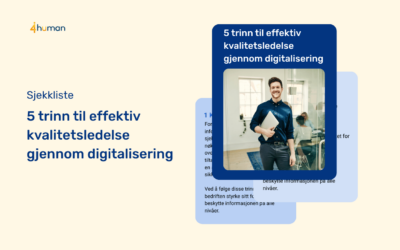Protect your business: Information security and risk management in focus

Small and medium-sized businesses (SMBs) are also facing increasing threats and must therefore implement robust routines for protecting data and sensitive information. In this increasingly complex digital world, it is crucial for every organization, regardless of size, to prioritize and act proactively when it comes to information security.
But what does information security actually mean, and how can companies build a robust defense against threats?
The answer lies in understanding the role of risk assessment.
What is information security?
Information security is about protecting information from unauthorized access, alteration, destruction, or disclosure. This includes everything from customer data and trade secrets to employee personal information. Maintaining information security is not only an ethical obligation, it is also a legal requirement in many cases.
Risk Assessment – The Heart of Information Security
Risk assessment is a process that identifies and analyzes threats to information security, assesses the likelihood of the threats occurring, and evaluates the consequences if they do occur. This forms the basis for developing measures to reduce or manage the risk.
How can companies conduct risk assessment?
We have listed some important points for how companies can best conduct risk assessments:
- Identify assets : Start by identifying which information assets the business manages, where they are located, and how valuable they are.
- Identify threats and vulnerabilities: Start by identifying potential threats to your company's information security. This can include everything from phishing emails and malware to physical intruders.
- Assess risk: Assess the likelihood that each threat will occur, as well as the consequences if it does. This can be done using a risk matrix or similar tool.
- Develop measures: Based on your risk assessments, develop and implement measures to mitigate or manage identified risks. This may include installing firewalls, implementing strong authentication, and ensuring regular data backups.
- Monitor and audit: Information security is not a static process. It is important to continuously monitor and audit your security measures to ensure they remain effective against new threats and vulnerabilities.
Taking information security seriously isn't just about implementing the latest technologies or following specific policies. It's about understanding the risks your organization faces and taking steps to mitigate them.
We have developed a guide to information security and risk assessment that provides practical advice and tools to help your company build a solid foundation for protection. It will also explain more about how to work with information security in a structured way. We in 4human ensures that you are also well on your way to meeting the requirements of the GDPR legislation/regulation.
Below you can download our guide and start your journey towards a more secure future for your business.
Related posts
How to build a culture of information security
How to build a strong information security culture with leadership support To make information security a high...
How digital transformation makes quality work easier
In today's rapidly evolving business landscape, digital transformation is no longer a choice, but a necessity. Traditional,...
Effective quality management - How digitalization creates better results
Quality management is a crucial part of any company's success. It is about ensuring that products and services meet both...



